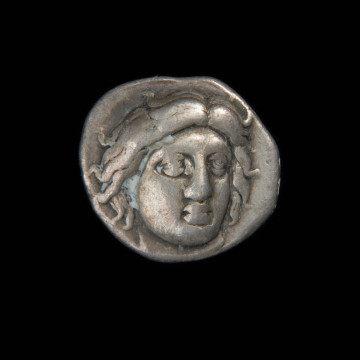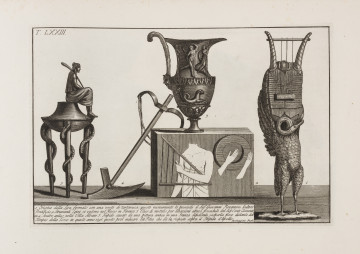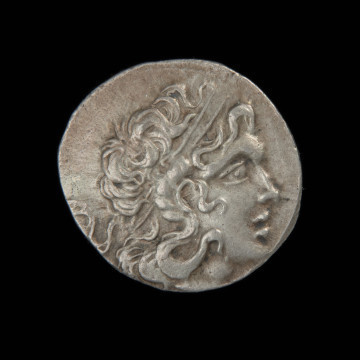The beginnings of minting in the southern part of Italy colonised by the Greeks date back to the 2nd half of the 6th century BC. Coins were minted in the poleis (city-states) to satisfy internal needs. Individual cities used their minting rates and units, which contributed to competing for monetary systems. In southern Italy, the Achaean system was widespread, with a silver stater weighing around 8 g. Among the oldest issues of this area are the coins of Metapontum dating to around 550 BC. The ear of grain visible on them refers to the primary export product of this polis. The issuer's name META also appeared, usually abbreviated, although sometimes the inscriptions are more elaborate. The initial technique of minting coins in a brakteat-like form, with a depressed reverse and a convex main side, was replaced by a traditional one with a double-sided variegated image. In the 1st half of the 4th century BC, apart from the ear, which became the emblem of Metapontum, images connected with mythical tradition appeared.
The presented coin is part of the content characteristic for Metapontine coins from the 1st half of the 4th century BC. The main side shows the head of Demeter, the protector of the city, goddess of fertility, cultivated land and harvest. The grain wreath on her temple is an apparent attribute of the deity. The cult of Demeter associated with agriculture is further emphasised by the motif of a plough placed next to an ear on the reverse. The abbreviated inscription META referred to the city's name, identifying the inhabitants equally with the ear motif. Both elements promoted the polis and were public testimony to its independence and autonomy. The economic nature of stater production in Metapontum (as a means of payment) is indicated by numerous known specimens and identified varieties of stamps.
Genowefa Horoszko



